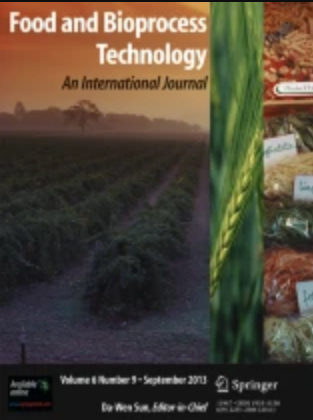Influence of Food-Packaging Materials and Shelf-Life Conditions on Dried Garlic (Allium sativum L.) Concerning Quality and Stability of Allicin/Phenolic Content
Abstract
Packing supplies and storage requirements significantly influence the value and stability of phenolic compounds in stored-dried garlic. This experiment aimed to evaluate and assess the performance of packing materials at various temperatures and storage times. Concentrations of allicin and primary phenolic acids packed in dried garlic low-density polyethylene/nylon/low-density polyethylene (LDPE/Nylon/LDPE) and low-density polyethylene/aluminium foil/low-density polyethylene (LDPE/AL/LDPE) pouches and kept at 10, 30 and 50 °C for 120 days were monitored by ultra-high-performance liquid chromatography (UPLC) techniques. The percentage of allicin retention ranged between 1.72 to 17.24% and 1.72 to 9.48% was observed in stored-dried garlic packed in LDPE/Nylon/LDPE and LDPE/AL/LDPE pouches, respectively. The first-order reaction found the kinetic of non-enzymatic browning in dried garlic packed in different packaging materials during storage. The Arrhenius calculation might be employed to characterize the temperature dependency of reaction kinetics. The activation energies for non-enzymatic browning were 1.67 and 14.04 kJ/mol for dried garlic packed in LDPE/Nylon/LPDE and LDPE/AL/LPDE pouches, respectively. The combination of LDPE/AL/LDPE pouch and storage temperature of 30 °C provided promising packaging materials and storage conditions to preserve the quality and stability of bioactive compounds in dried garlic.

 求助内容:
求助内容: 应助结果提醒方式:
应助结果提醒方式:


